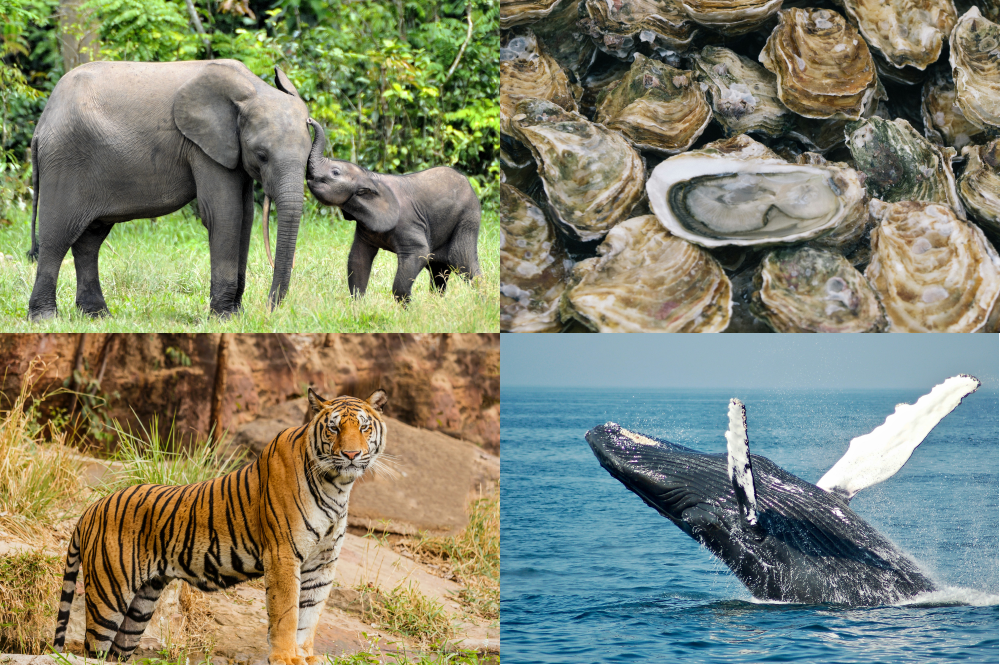4 Animals That Support The Fight Against Climate Change

The role of animals in the fight against climate change is often overshadowed by the effects of the climate on animals. However, they can make a large impact on climate change mitigation, due to their ability to trap and store carbon safely as well as contributing to carbon removal. Some animals help to remove carbon in several ways, including foraging, seed dispersal and carbon deposition.
Animals That Help Mitigate Climate Change
Whales
Whales help to regulate ocean habitats; in their search of food, whales dive to the depths of the ocean, and upon returning, bring nutrients such as phosphorus, iron and nitrates with them. When deposited into the ocean, these nutrients aid the growth of phytoplankton – microscopic marine algae which produce 50% of the world’s oxygen and capture 40% of the CO2 in the atmosphere. Additionally, whales migrate far and wide, taking with them these nutrients which are deposited across the ocean, aiding carbon removal in various areas.
Whale bodies also store and lock away carbon. When they die, their bodies sink to the bottom of the ocean, where the carbon is captured and stays for centuries. This is beneficial to the environment as it means that carbon is stored under water, rather than in the atmosphere – which can happen if whales die on beaches or in open air.
Tigers
We often associate tigers, and their reduction in numbers, with the effects of climate change, rather than with their contribution to fighting it. However, they play a key role in aiding storage of carbon. Tigers’ presence in a forest tends to scare off humans, and subsequently human activity such as chopping down trees may be prevented. This means more trees are maintained, which therefore aids in the amount of carbon captured.
Oysters
Small but mighty, oysters filter an average of 200 litres of water daily1, helping to clean the ocean. Additionally, oysters fuse together to create reefs which provide homes for many marine organisms such as fish and invertebrates, promoting ecosystem balance. They also help to protect underwater vegetation from storms, protecting this valuable habitat.
Elephants
Elephants, specifically the critically endangered African forest species, fight climate change by maintaining biodiversity. When foraging for food, they damage the surrounding vegetation by stepping on and stripping the leaves and branches from smaller trees and bushes which maintain a lower carbon density. This destruction of small trees and bushes removes competition for water and light so larger and slower growing trees can capture and store more CO2.
Additionally, a large percentage of an elephant’s diet consists of fruit. Once the fruit passes through, seeds are dispersed all over the land – many of which won’t germinate until they have passed through an elephant’s digestive system, removing their tough shell. This promotes the growth of trees in the forest.
It is estimated that if forest elephants become extinct, the above ground carbon storage in their habitats would decrease by 7%2.
Outlook
Taking care of these animals is key. In addition to ensuring that their natural habitats are conserved, a process called rewilding can also help by reintroducing wild species that have previously been lost and restore the natural ecosystem. Alone, animals cannot solve the climate change dilemma, but they can undeniably contribute to the fight against it.
2 Nature


